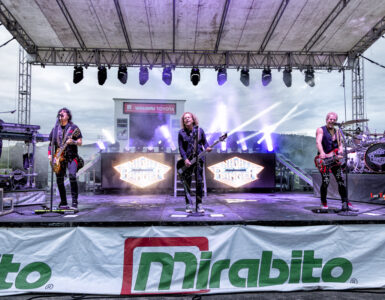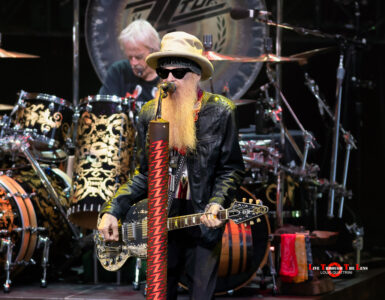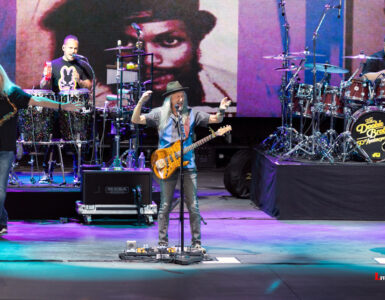FINAL DESTINATION

On October 13, 1869, a steamboat transporting Mary Rote, Willard Asylum’s first patient, docked at Ovid Landing on the Northeastern shore of Seneca Lake. Mary, deformed and insane, had been led off the dock after spending nearly ten years prior chained and without a bed or clothing in a cell in the Columbia County Almshouse.
Several more patients arrived at the dock on that first day, all in chains and irons, and one that appeared to have been unloaded in a small crate around 3 feet square made of chicken wire and wood. The patients that were considered “difficult” often were flogged, doused or “pulleyed” ( A technique of hanging by the thumbs). Most of the first patients at Willard were deemed incurable, chronic and had lived most of their lives at poor houses, overcrowded mental asylums and almshouses. Willard was to be different, at least at first. The new patients, after being unloaded at the ferry dock, were bathed, dressed and fed, and were provided with comfortable beds in either the mens or womens ward.
Willard Asylum for the Insane offically opened in October 1869 after over three years of construction which began in the Summer of 1866. By 1877, Willard was the largest asylum in the United States with 1500 patients. In 1890, its name had changed from Willard Asylum for the Insane to Willard State Hosptial. Nearly 55,000 patients were admitted to Willard before it finally closed in 1995 with a peak population of 4,076 in 1955.
While standing on and photographing the abandoned and deteriorated docks, I wondered how many patients stepped off the steamboat onto these docks to begin their new life at Willard and how many of these confused mentally ill patients might have thought they were on some kind of vacation after departing large cities such as New York or Buffalo and first seeing beautiful Seneca Lake and the lush green hillsides and forrests of the finger lakes area of New York.

My friend Andy and I had been talking about shooting Willard State Hospital for a long time but we both knew it was nearly impossible to get near the place as some of the buildings are now being used by the New York Department of Corrections as a shock incarceration prison for drug addicted offenders. In May of 2012 Andy got wind of a public tour that was going to be held at Willard to help raise money for some programs there such as the Dick Van Dyke treatment center and library. For a ten dollar donation, the public was allowed to visit this historical asylum and enter some of its still sound structures as well as hear fascinating stories of life and work at Willard from former patients, nurses and staff members. Once again it was…game on !
I had worked a twelve hour shift the night before and left for Andy’s place as soon as I got out of work at 7:30 a.m. We drove separately up to Watkins Glen, NY, grabbed gas and a snack then continued up route 414 to Ovid, NY along Seneca Lake, and finally to our destination. I was exhausted but awake with excitement and anticipation.
Our first stop on the tour was the Grandview building (the oldest structure on the grounds and still in use today) where we were greeted by our guides and reviewed the outline and agenda for the tour. Andy and I were reminded several times, as we appeared to be the only ones with “pro” camera gear, not to ever point our cameras at or photograph any of the inmates of the faciltiy that was secure behind rows of razor wire or the treatment facility itself.
We were led past a series of dilapated but very cool Victorian buildings that were part of the original asylum but were now fenced in and due to be demolished as they were deteriorated too badly to be restored. They looked amazing however and I wish we could have photographed a few of those historical buildings. Past these old structures, we stopped at the pump house and power station as well as the fire station where we heard some interesting history of Willard’s own private fire and police company.


After spending about twenty minutes at the pump and power station we hopped into our vehicles and followed our guide past the shock treatment facility and the old decaying Victorian mansions that were unfortunately off limits. Our second stop was Hadley Hall (1892). I wasn’t sure how impressed I would be initially as the building was pretty well maintained and was still being used for training and classes for the shock treatment program. It was old but looked refurbished and in good shape. The main floor held a medium sized auditorium and stage that was used for training but I was glad to find out most of the other levels were not used and had many hidden treasures in them.

Once inside, most of the group went straight ahead into the auditorium to listen to the guide discuss the history of Hadley. I however, spied a set of old stairs on each side of the foyer that looked like they went up to a second level balcony. I had to check it out. One of the guides thought it might be ok for me to “sneak” up there for a second as I must have looked professional with my camera gear hanging all over me and strung across my shoulder. He unlatched the chain and let me up. Andy was still outside getting some IR shots of the exterior of the building. When I arrived on the second floor, I was happy I went with my hunch. I found the original theatre seating and a strange room at the back of the balcony that looked like it was frozen in the 1940’s.

I thought about the patients and staff that must have used this facility years ago and sat in these seats to watch the different shows and movies that played in the theatre. I looked down over the balcony and saw that the crowd remained content with listening to the talk our guide as he continued to share the history of Hadley Hall. I was content in my own space exploring the balcony, sitting in the old seats and wondering what was in that little room in the back.

While sitting in one of the old theatre seats I could here the guide talking about Hadley Hall in its heyday. At one time Hadley Hall housed a basketball court, a theatre, a four lane bowling alley and a fine snack bar with a hand laid stone fireplace in the basement where the staff would often gather and take a break. The guide talked about movies they would show to the patients once or twice a week for both the men and women living at Willard back in the 1950’s and up to its closing in 1995. They must have shown hundreds of classic movies. Being a huge TCM buff and fan of the classics, I could picture myself working years ago as a mental health therapist and enjoying this view from above while watching “Anatomy of a Murder” or “Casablanca” on the silver screen below. After resting a bit and still no sign of Andy, I ventured into the small little room behind the vintage Altec Lansing speaker. Holy cow, It was the projectionists room with piles of vintage reels, two massive Brenkert carbon arc 35mm movie projectors that had to have been from the 1930’s or 1940’s, film gear, tools, lenses and tons of other vintage projection equipment. The most amazing thing in this room were the hundreds of names of movies and the years and dates that they were played written all over the walls of this little projection room.



After spending about a half an hour in the projection room, I noticed I could no longer hear the voices of the tour group below so I decided to head back down stairs to search for Andy and the rest of the group. A guide said that they had went down into the basement and pointed in the direction of the basement stairs. I had to tell Andy about the projection room as I knew he wouldn’t let me live it down if I kept it to myself. As I approached the bottom of the basement stairs I could hear the voices of the curious group, however I needed to stop once more to take a bracket of the coolest door handle ever.

At the bottom of the stairs just to my right the tour was exiting what looked like a rec room. As they were walking out, I entered and found myself in a four lane bowling alley with Andy grinning from ear to ear at the far end while saying “dude, this is awesome”. I hadn’t told him about the balcony yet, I just said “yeah, freaking cool”. He was setting up shots at the far lane of the alley near the pins and back area with all the mechanical stuff. I began to set up my shots at the end I was at as to not get in his way and we agreed to switch locations when each of us were done shooting. The first thing that came to mind was that if a Brady kid was instutionalized here, he or she must have bowled in this alley, It looked 1960’s-’70’s all the way except for the mechanics at the far end which appeared much older that that. I loved the Brunswick table and score pad as well as the vintage ball cleaner.


After Andy and I had finished our respective shots which seemed to take forever indoors due to multiple and long exposures, we traded spots and I went towards the rear of the lanes to start shooting. Perfect timing as some very cool sunbeams were starting to shine through an old dusty window onto the lane and some vintage pins.



We didn’t realize how long we remained in to shoot the bowling alley, however we did notice after some time that our tour was long gone and a second group was coming in for their Hadley Hall tour. After finishing up, we headed back outside to see if we could find our original group and noticed they were heading over to Elliott Hall which was built in 1931 and served as an all inclusive hospital for Willard patients. The nurses who were part of the tour, discussed their time working at the hospital and that all admissions, procedures, minor and major surgeries and dental care were carried out at Elliott Hall until its later years when patients needing surgery were transported to outlying and more modern facilities. Willard was billed originally as a humane institution where patients were well cared for, fed, clothed and exercised and protected from the “outside world”. In its later years however, rumor has it that experimental drugs were used on patients as well as lobotimies, hydrotherapy and electoshock therapy. Dr. Doran, a former physician at Willard, once shared in a report that in 1942 there were 1443 electroshock treatments given at the hospital at Willard. Elliott Hall is still in use as part of the shock treatment program.



I was having the time of my life shooting this historical asylum, not only because abandoned and archaic photography is my passion, but also because I have worked in the mental health field for the last twenty two years and remain very intrigued and interested in the history of the field and the history of asylums and the patients that lived and died in these institutions. I have a great interest in architecture, especially the Kirkbride buildings.
Despite the fact I was having such a great time exploring and shooting this old asylum and hanging out with my good friend Andy, I was going on being up for about twenty hours having worked the previous night shift and my body was starting to feel it. It felt like my camera pack weighed 100 pounds. (It’s probably close to that anyway) and I was losing steam. I was not going to leave however without shooting a few more key places along the tour including the original ferry dock, cemetery and the morgue.
The morgue was next on the agenda. As we were walking towards the morgue after getting directions from a former staff member, we noticed a group of people were just walking away from it. It looked like we would be the only ones there, at least for the moment. When we arrived at the morgue, we were greeted by a nice old lady who introduced herself as a former nurse who worked there years ago. She explained to us what it was like to work at the morgue and the procedure for performing an autopsy after a patient had died. She talked about the cemetery where some 5776 now rest in a largely unmarked and somewhat overgrown field. She explained that a deceased person would be placed in the freezer then prepared for autopsy, and when completed, would be taken to the cemetery for burial and the patients grave would have only a small metal marker with a number.
For the next twenty minutes or so, Andy and I had full reign of the morgue and were able to take some pretty cool shots while listening to our private former nurse talk about the equipment and facility. We were just about ready to wrap up the morgue shoot when we noticed another tour group heading our way. Just in time




Our day, well at least mine, had come to an end. It was close to 2 p.m. and I was now officially beat. I had been up for 23 hours and still had to drive back home and work later that night. I had explained to Andy that there was no way I could shoot the cemetery even though I deperately wanted to. He, however convinced me to stay for just a quick shoot of the abandoned ferry docks which I agreed to and now am glad I did. I initially was not happy with my shots, but was able to work some post processing magic and ended up being happy with the final result. After leaving the sunken docks, I finally caved and spilled the beans to Andy about the projection room back at Hadley Hall. Needless to say, we stayed a little longer while Andy grabbed some cool shots of his own in the projection room as I stood by tiredly watching but smiling.
Our day at Willard State hospital was one for the record. We met some cool people along the way including former staff and patients, along with our tour guides who were more than accomodating. We were able to make some connections for hopefully another shoot in the near future when we can spend more time exploring and photographing this sprawling campus. I made it home safely, obviously, although the drive seemed to take forever. I was able to jump into bed after being up for 25 hours and grab a quick four hour nap before returning to my own job in the mental health field later that same evening.
At the end of this adventure story I have included an external link that tells a more detailed story of the history of Willard. So until the next adventure, I hope you enjoy the photographs and the story.







You have some very beautiful pictures that I am very interested in purchasing as I have a sincere passion for the history and other details of Willard….I am not certain why I became drawn to this place…..but I was about three years ago…again…thank you for taking such beautiful pictures. I will be in contact with you regarding my purchases